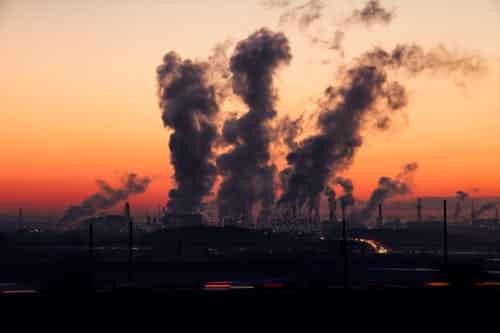Washington Achieves 2020 Greenhouse Gas Emissions Target

Washington’s greenhouse gas emissions declined 13.8 percent during 2020, according to a Jan. 6 report from the Washington Department of Ecology. The report, titled Washington State Greenhouse Gas Emissions Inventory: 1990-2021, summarizes emissions from 1990 through 2021 to track the state’s progress against its legal limits on emissions. GHG emissions increased by 8.8 percent in 2021, however remained below 2019 levels.
During 2020, statewide emissions added up to 88.3 million metric tons of carbon dioxide equivalent (MMT CO2e), six percent lower than the 1990 baseline of 93.9 MMT CO2e, which is the statutory limit Washington was mandated to achieve. Total emissions for 2021 increased higher than the 2020 statutory limit/1990 baseline by 2.3 percent to 96.1 MMT CO2e. This represents a total increase of 8.8 percent compared to 2020, resulting mostly from increased transportation emissions associated with non-highway travel. The largest source of emissions during 2021 was the transportation sector, at 38.2 MMT CO2e or 39.7 percent of total emissions, due to the direct combustion of fossil fuels in internal combustion engines, which is 7.8 percent higher than the 2020 limit within the sector.
The electricity sector made the most improvements during the 2019 to 2021 period, with emissions declining by around 15 percent. The improvements were largely led by record solar and wind generation, alongside significantly lower coal and natural gas utilization. Moreover, an increase in hydropower production in the generation mix, allowed operators to use cleaner fuels at the expense of fuels which produce higher emissions. The Clean Energy Transformation Act, which was implemented during 2021, will lower emissions from this sector in the future by necessitating electric utilities to transition to 100 percent clean electricity by 2045.
Despite the increase in the state’s GHG from 2020 to 2021, emissions per capita and per dollar of economic output continued to decline. A number of major climate policies are expected to reduce GHG emissions going forward. The state has implemented a cap-and-invest program, which aims to drastically cut carbon emissions towards achieving carbon neutrality by 2050. The program aims to deal with the root cause of global warming by reducing carbon emissions, investing in cleaner energy and phasing out fossil-based energy generation systems.
Other policies which are expected to assist in reducing GHG emissions include, the 2021 Climate Commitment Act, the Clean Fuel Standard, zero-emission vehicle standards, some fluorinated gas regulations, and clean buildings regulations. The Climate Commitment Act is an economy-wide policy that targets that state’s largest emitters of greenhouse gases, while other policies target specific sectors of the economy, such as transportation.
EnerKnol Pulses like this one are powered by the EnerKnol Platform—the first comprehensive database for real-time energy policy tracking. Sign up for a free trial below for access to key regulatory data and deep industry insights across the energy spectrum.
ACCESS FREE TRIAL


